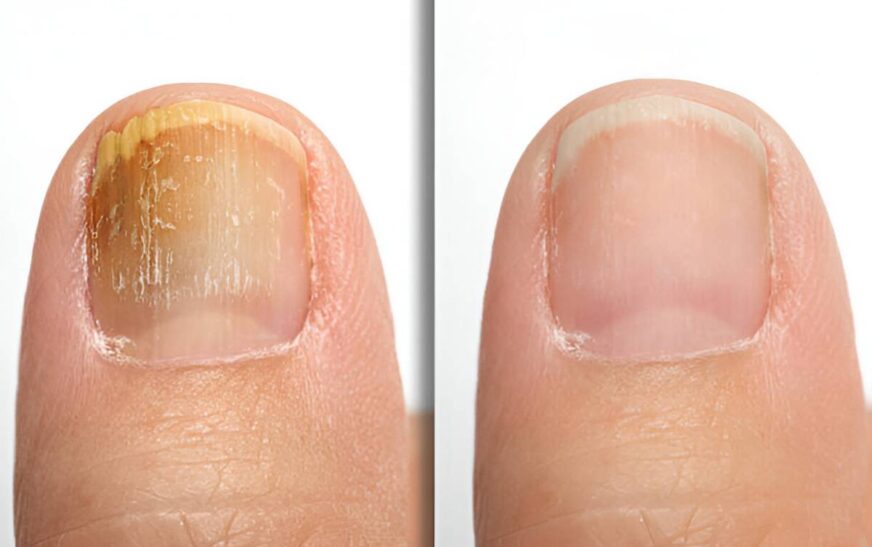Toenail fungus is more common than many people realize, often leading to discomfort, discoloration, and even pain. When it comes to this stubborn infection, one of the most frequently asked questions is, Is toenail fungus contagious?
The simple answer is yes—fungal infections of the toenails can be highly contagious, spreading easily from person to person and from surface to surface. Understanding how this spread occurs and what you can do to prevent it is essential for maintaining healthy feet.
Understanding the Spread of Toenail Fungus
Toenail fungus, also known as onychomycosis, thrives in warm, moist environments. Places like communal showers, swimming pools, and gym locker rooms are hotspots for fungal growth. The fungus can enter the nail through tiny cuts or separations between the nail and nail bed, making it easy for the infection to spread.
Sharing personal items such as nail clippers, shoes, or socks can also transmit the fungus from one person to another.
How Contagious Is Toenail Fungus?
Toenail fungus is not only capable of spreading from person to person but can also move from one toenail to another or even to the fingernails. The contagious nature of toenail fungus means that if one member of the household has it, others are at risk, especially if they share a bathroom or shower area.
People with weakened immune systems, diabetes, or circulatory issues are at higher risk of contracting the fungus, as their bodies may struggle to fight off infections.
Fungal infections can persist on surfaces for a long time, so even indirect contact with infected areas, such as floors, towels, or carpets, can lead to spreading. This makes it crucial to adopt measures that minimize the risk of contact and infection. Understanding the risk of contagion is vital to controlling the spread and keeping your feet healthy.
Tips to Protect Your Feet from Toenail Fungus
1. Wear Protective Footwear in Communal Areas
One of the simplest ways to prevent toenail fungus is by wearing flip-flops or water shoes in communal showers, pools, and locker rooms. This creates a barrier between your feet and the fungus that may be present on wet surfaces.
Make it a habit to wear protective footwear every time you are in such places, as direct contact with surfaces increases the risk of catching the infection.
2. Keep Your Feet Dry and Clean
Fungi love moisture, so keeping your feet dry is crucial. After bathing, make sure to dry your feet thoroughly, especially between the toes. Moisture can get trapped in these small spaces, providing the perfect environment for fungus to grow.
Use foot powder to absorb excess moisture and reduce the risk of fungal growth. Make it a daily routine to check and care for your feet to prevent infection.
3. Choose Breathable Footwear and Socks
Opt for shoes made of breathable materials like leather or canvas, which allow air circulation and help keep feet dry. Avoid wearing closed shoes for extended periods, especially in hot weather, as this can trap sweat and create a breeding ground for fungus.
Cotton or moisture-wicking socks can also help absorb sweat, reducing the chance of fungal infections. Changing socks regularly, especially after exercise, is an excellent way to keep feet fresh and fungus-free.
4. Practice Good Nail Hygiene
Regularly trimming your toenails and keeping them clean can prevent the buildup of dirt and fungi. Use clean, sanitized tools for nail care, and avoid sharing these tools with others to reduce the risk of spreading infection.
Keeping your nails short and avoiding injury to the nail and surrounding skin also minimizes the chances of fungal entry. Consider visiting a reputable nail salon where hygiene standards are high, or take care of your nails at home with proper tools.
5. Avoid Sharing Personal Items
To minimize the risk of transmission, avoid sharing towels, nail clippers, shoes, or socks with others. If someone in your household has toenail fungus, they should have separate towels and personal care items to prevent spreading the infection.
Educating family members about the importance of not sharing personal items can significantly reduce the risk of contagion.
6. Disinfect Shoes and Nail Tools
Fungal spores can live in shoes and on surfaces for months. Regularly disinfect your shoes and nail tools using antifungal sprays or wipes. This practice helps eliminate lingering fungus that can cause reinfection.
Consider using UV shoe sanitizers, which are effective in killing fungus and bacteria inside shoes. Keeping your footwear clean not only protects you but also others who might come into contact with your shoes.
7. Check Your Feet Regularly
Regularly inspecting your feet and toenails allows you to catch infections early. Look for signs such as discoloration, thickening of the nails, or a foul odor. Early detection can make treatment easier and more effective.
Make it a habit to check your feet during your daily routine, paying close attention to any changes in your nails or skin. Early intervention can prevent the spread of fungus to other nails or individuals.
8. Maintain a Healthy Immune System
A strong immune system can help your body fight off infections, including toenail fungus. Eating a balanced diet, staying hydrated, and getting regular exercise can bolster your immune defenses. If you have underlying health conditions, managing them effectively can also reduce your risk of infections.
Consider taking supplements that promote skin and nail health, such as biotin and vitamin E, which can strengthen your body’s natural defenses.
9. Use Antifungal Products as a Preventative Measure
Applying antifungal creams, sprays, or powders can serve as a preventative measure, especially if you are frequently exposed to environments where fungus thrives. These products can help keep your feet free from infection.
Look for products that are easy to apply and fit into your daily routine, such as sprays that can be used after a shower or powders that can be sprinkled into your shoes. Consistent use of these products can be an effective line of defense against fungal infections.
Additional Precautions for Specific Situations
Protecting Your Feet During Different Seasons
Different seasons bring different challenges when it comes to foot health. During the summer months, the risk of fungal infections can increase due to higher temperatures and more frequent exposure to communal areas such as pools and beaches.
Applying sunscreen to your feet can prevent sunburn, which can weaken the skin and make it more susceptible to infections. In the winter, heavy, non-breathable footwear can trap moisture, creating a perfect environment for fungus. Ensure that shoes are thoroughly dried after use and consider using moisture-absorbing foot powders to avoid fungal conditions.
Caring for Feet with Pre-existing Conditions
Individuals with diabetes or circulatory problems need to be extra cautious, as these conditions can make it harder to fight off infections and heal from injuries. Regular check-ups with a healthcare provider, along with diligent foot care, are crucial for those with underlying health issues. Using moisturizers specifically designed for diabetic foot care can help keep the skin healthy and less prone to cracking, which can provide an entry point for fungi.
Conclusion
Preventing toenail fungus is all about maintaining good hygiene and being cautious in environments where the fungus is likely to thrive. By taking proactive steps—such as wearing protective footwear, keeping feet dry, and avoiding the sharing of personal items—you can significantly reduce your risk of infection.
Regular foot care and hygiene practices are essential for keeping your feet healthy and fungus-free. Taking these precautions not only helps you avoid toenail fungus but also keeps your feet in optimal health year-round.




